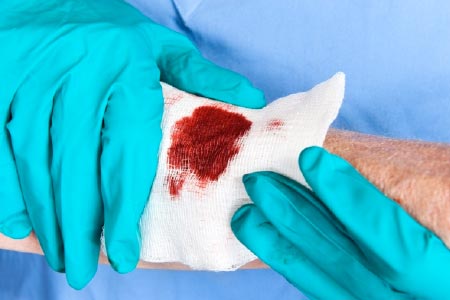 Bloodborne pathogens are microorganisms, normally carried in infected blood and bodily fluids, that can cause diseases, some fatal, such as Hepatitis B and C, as well as HIV.
Bloodborne pathogens are microorganisms, normally carried in infected blood and bodily fluids, that can cause diseases, some fatal, such as Hepatitis B and C, as well as HIV.
Qualified, trained first-aiders should be equipped to safeguard against this exposure.
Responding to injuries:
Here at our facility the one opportunity we have to come in contact with a bloodborne pathogen is while we are trying to assist an injured coworker who is bleeding.
Here are some things to remember:
- If a coworker has a minor accident that causes bleeding, try to have the victim bandage his or her own wound.
- If the injury is serious, call the emergency response team.
- If you don’t have time to wait for the emergency response team, make sure you take universal precautions.
- Remember that vomit, burns, abrasions, and external and internal injuries can release bodily fluids.
- When removing disposable gloves, roll the first glove off the hand inside out.
- Place disposable gloves in an approved biohazard bag. Wash your hands immediately after removing any gloves.
- If you have been exposed to a victim’s bodily fluid, wash the affected area thoroughly with soap and water.
o Contact a medical professional and report the incident to your employer for further action, should it be appropriate.
When you gamble with safety…you bet your life!!
Download flyer: STOTW_543_The Injured and Bloodborne Pathogens Download Spanish flyer: STOTW_543_The Injured and Bloodborne Pathogens_esp

